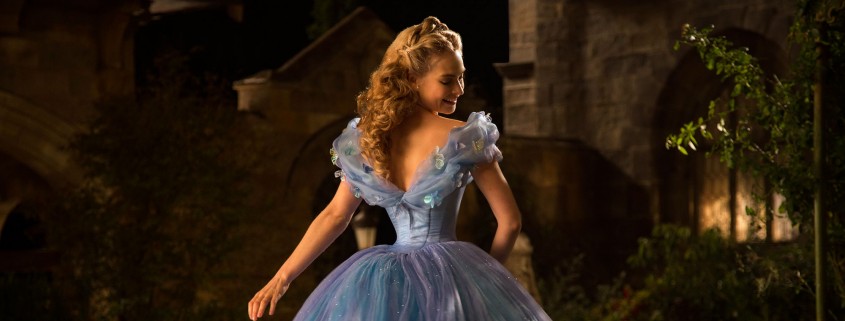Disney should have looked elsewhere for its remake princess
Two weeks ago, Kenneth Branagh’s remake of Disney’s Cinderella opened in theaters to mostly glowing reviews. Despite the fact that the basic story remained largely the same, Branagh’s live action retelling dazzled and shined with its inventive use of color and an endearingly earnest storyline, going on to earn $336 million worldwide.
That isn’t to say the movie’s publicity hasn’t had its fair share of hiccups, however. Debate and outrage sparked soon after the film’s release when audience members were particularly disturbed by the ballroom scene where Cinderella finally dances with the prince. In the scene, Cinderella wears a sparkling cerulean dress, gifted to her by her newfound fairy godmother.
Audiences and critics alike took to the Internet to call attention to Lily James’ extremely tiny waist. Some argued that a waist that size couldn’t be achieved without CGI, while others complained of the viciously high standards young girls would hold themselves up to after seeing James’ figure in the movie. James herself was required to respond to the allegations in several interviews, but maintains that her naturally small waist, in addition to costume designer Sandy Powell’s voluminous skirt, simply created an “optical illusion” when filming, and no CGI was used at all. The Internet was basically placated by this answer, and the controversy subsequently disappeared after the first week and, of course, didn’t hurt sales in the least bit.
But I find myself wondering, maybe the controversy should not have been about the costume designer’s use of corsets or Lily James’ impossibly tiny waist, but whether the story of Cinderella needed to be regurgitated in the first place. We already have Disney’s classic 1950 animated version, not to mention a slew of others, such as 1997’s Cinderella (starring Brandy and Whitney Houston) and 2004’s A Cinderella Story with Hillary Duff. When looking at these remakes, we must beg the question: why Cinderella in 2015?
In an environment where Disney’s blockbuster hit Frozen was lauded for its feminist undercurrents when it premiered in 2013 and went on to gross a staggering 1.2 billion worldwide, the notion that we might have taken a step back with Branagh’s remake weighs heavy in my mind. Frozen is ultimately about two sisters who find the power in having love for each other. Cinderella? Not so much girl power involved there. The basic story is about a young, beautiful, extremely gentle girl trapped by her wicked stepmother and two stepsisters, forced to do their incessant, superfluous chores and accept their emotional abuse until one day a prince finds her and — after a bit of a “boy meets girl, boy loses girl, boy gets girl back” timeline — whisks her away to happily ever after.
Arguments can obviously be made on either side concerning Western society’s storied insistence to imprinting the idea of happily ever after into young children’s — especially girls’ — minds. I remember growing up watching countless Disney movies as a child, and while they were beautiful and magical and doubtless classics, looking back on it, I question the amount of fantasy forced onto such a young brain. I grew up with the notion I would find someone to marry and all would be swell for the rest of my life, but I have since realized the falsity in that idea as a young woman in the 21st century when a third of marriages end in divorce in America and an increasing amount of women are even choosing not to get married — citing financial independence and freedom of choice as two defining factors when considering marriage.
In fact, a whole slew of media today centers on the very notion that life isn’t as happily ever after as we were taught it would be growing up. HBO’s series Girls is a particular show to note: in the first season, Lena Dunham’s character Hannah Horvath must face the startling realities of being a 20-something and fending for herself in the real world. A tagline for the show is “Happily whatever after,” connecting the cognitive dissonance between what the characters believed life would be like, and what it actually turned out to be.
So, if we take into consideration the current state of disillusionment among young adults growing up today and the problems that arise when we realize things don’t turn out exactly how they’re planned, why remake a film that sets up these problems for future generations to come?
Not only does the film perpetuate the unreal idea of happily ever after, but it provides a female protagonist who is only able to lift herself out of her abusive home by waiting for a fairy to give her a beautiful dress, transform her into someone more glamorous and beautiful, and then meet a man who can only recognize her in real life by having her try on a shoe. How are young girls supposed to glean a blueprint or pathway for their own life when they’re provided fairy tales with little to no basis for truth?
The one positive aspect I can find in this new slew of remakes of aged stories is the fact that Disney announced Monday they would be remaking their animated Mulan (1998) into a live action feature. Thankfully, Mulan, though not without its faults, is a story about a young woman who decides to pose as a male warrior in order to take her invalid father’s place in the Chinese military and thus avoid retribution from the Chinese government. I, for one, am excited to see that remake; I’m not so sure about Cinderella.
Minnie Schedeen is a sophomore majoring in critical studies. Her column, “Film Fatale,” runs every other Tuesday.

